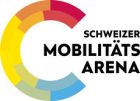Startup ClearMotion Has a Cure for Autonomous Carsickness
The idea of riding in a self-driving car makes a lot of people queasy. The reality might actually make them sick.
Autonomous vehicles are expected to cause more motion sickness than human-driven ones, which makes sense if you think about a long ride in a car with a mind of its own -- especially if you're looking down at a phone or a tablet the whole time. ClearMotion, a Massachusetts startup, claims it has a way to smooth things over.
It's not the biggest challenge facing AVs, but companies that want to get everyone into these cars are taking it seriously.
Last year, Uber applied for patents on several proposals to combat motion sickness in driverless cars, including rider alerts, refreshing airflow systems and tilting seats. The University of Michigan has proposed special glasses. ClearMotion, which is funded partly by Qualcomm Ventures and is working with Bridgestone, uses the suspension to smooth out the ride.
Carsickness happens when one part of the body (such as the inner ear) senses movement while another (such as vision) doesn't. Cars often make motions that riders don't see coming, such as pitching forward, rolling from side to side, and heaving up and down. Passengers who can't see where the car is going because they're looking at a book or a device get it worst. Drivers tend to suffer less because they're watching the road closely and know when they're going to brake or turn.
Because an AV has no driver, those motions are out of anyone's control. And riders expect to use devices more in a driverless car because one of its selling points is productivity: The chance to work or watch a movie during your commute. Not much chance of that if you're busy trying to keep your lunch down.
ClearMotion's technology, called Proactive Ride, is designed to minimize unsettling motions by sensing them ahead of time and counteracting them. The company compares it to noise-cancelling headphones. The system uses software, accelerometers and actuators attached to the car's shock absorbers that push and pull the wheels to counteract movements.
03. Mai 2018
AUTOMAT VOR ORT: KONFERENZ AUTOMATICAR 2020
Am 16. September findet der Fachkongress AUTOMATICAR zum 2. Mal änlässlich der ...
»weiterlesenAUTOMAT vor Ort: Konferenz AUTOMATICAR
Am 12. April fand das erste Mal die von der Mobilitätsakademie des TCS organisierte ...
»weiterlesenAutomat vor Ort: EPTA Conference 2017
EPTA Conference 2017 „Shaping the Future of Mobility“ Luzern, Verkehrshaus, Mittwoch, 8. ...
»weiterlesenAuto-mat vor Ort: Automatische Shuttlebusse tpf
Am 22. September war www.auto-mat.ch live vor Ort, als die ersten beiden automatischen ...
»weiterlesen


